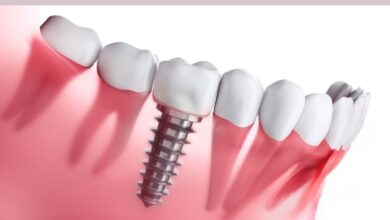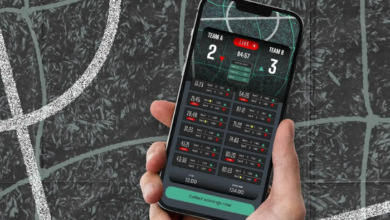Data 21M Parkmobile Marchkrebs Krebssecurity
Data 21M Parkmobile Marchkrebs Krebssecurity

It is a comprehensive security solution for mobile applications. It provides secure authentication and encryption of data, as well as protection against malicious attacks and intrusions. It is an advanced security solution that helps protect your mobile apps from unauthorized access, data loss and privacy breaches.
What is Parkmobile?
It is a mobile parking solution that provides users with the convenience of paying for their parking spots with their smartphones. It’s a secure, efficient and easy way to pay for parking without having to worry about finding change or waiting in line at the meter. With the Parkmobile app, users can reserve a spot in advance, receive notifications when their time is running out and even extend their parking session if needed.
Parkmobile is available in over 400 cities across North America, including 21 million registered users. The system is PCI compliant and uses the latest encryption technology to protect customer data and ensure a secure payment process. In March 2020, Parkmobile was the victim of a data breach where hackers were able to access customer data. The company quickly identified and addressed the breach, and put measures in place to ensure their customer data is kept safe. Parkmobile is committed to protecting customer data and providing a secure payment process.
21M KParkmobile Breach
It, reported by KrebsSecurity in March 2020, has sent shockwaves through the data protection industry. This cyber attack was particularly severe, as it exposed the personal information and payment records of 21 million Parkmobile users. The attack was especially concerning as it was perpetrated by a malicious actor who used a zero-day vulnerability to gain access to the company’s systems and databases.
This breach has been particularly costly for Parkmobile, as it has led to widespread customer mistrust and a large financial penalty from the Federal Trade Commission. The company is also facing potential lawsuits from affected customers. In response to the breach, Parkmobile has implemented a series of security measures, including enhanced encryption and two-factor authentication, to protect its users’ data.
It has also implemented a data breach notification system to alert customers to any potential risks. Parkmobile has also reached out to law enforcement agencies in order to investigate and pursue criminal charges against the malicious actor. Although the company has taken steps to protect its users’ data, the long-term damage of the 21M Parkmobile breach may be difficult to fully assess.
Krebs on Security’s Analysis of the Breach
Krebs on Security’s analysis of the breach of Parkmobile’s 21M customer records is a remarkable example of the importance of cybersecurity. According to Krebs, the breach was first discovered in March of 2019, when a hacker group known as ShinyHunters began selling the stolen data on the dark web. The hacker group was able to access the Parkmobile database through a vulnerability in the company’s API, allowing them to gain access to customer information such as names, email addresses, phone numbers, and vehicle license plate numbers.
Krebs was able to confirm that the stolen data was legitimate, and that it was indeed from Parkmobile. Krebs then examined the data and concluded that the breach was likely the result of Parkmobile’s failure to properly secure their API. Parkmobile had not implemented the proper authentication protocols to protect their API, allowing the hacker group to access the data without authorization. Furthermore, Krebs noted that the data stored in the database was not encrypted, leaving it vulnerable to theft.
Krebs’ analysis of the Parkmobile breach is a stark reminder of the importance of cybersecurity. Companies must take the proper steps to protect their data, including implementing authentication protocols and encrypting their data. Furthermore, companies must be aware of the potential vulnerabilities in their systems, such as the API vulnerability in Parkmobile’s case, and take steps to address them. By taking these steps, companies can ensure that their data is secure and their customers’ data is safe from theft.
Breached Data: What was Compromised?
It is a serious issue that requires attention. It is reported that the data of 21 million users was compromised as a result of a data breach. The data that was breached includes email addresses, usernames, passwords, payment card numbers, and expiration dates. This data was stored in a cloud storage system that was not properly secured, allowing unauthorized access to the data.
As a result, this data could be used by malicious actors to commit identity theft and other fraudulent activities. It is important to note that the data was not encrypted, which means that the data was vulnerable to attack. This means that the data could be accessed without the user’s knowledge and used for malicious purposes. Furthermore, the data was gathered from various sources, including mobile apps and websites, thus increasing the chances of the data being misused. Additionally, the data could be used to target individuals for phishing attacks or to access other accounts.
The breach of this data has caused significant damage to user’s privacy and security, as well as to the reputation of the company. As a result, it is essential that all users take the necessary steps to protect their personal information. This includes changing passwords, deleting any accounts that could be linked to the breach, and monitoring accounts for suspicious activity. Additionally, it is important to be aware of the implications of the breach and take steps to protect one’s data in the future.
KrebsSecurity’s Advice for Those Affected
KrebsSecurity has provided advice to those who have been affected by the ParkMobile data breach. The breach, which occurred in March 2021, exposed the personal data of 21 million users. KrebsSecurity advises that all those affected take steps to protect their personal data, such as enabling two-factor authentication (2FA) on any accounts that offer it. Additionally, victims should be on the lookout for phishing emails or malicious links that may appear to come from ParkMobile.
KrebsSecurity also recommends that users monitor their credit reports for any suspicious activity and consider placing a credit freeze on their accounts. Finally, users should be aware that their personal data may have been sold on the dark web and should take steps to protect their online accounts from malicious actors. By following these steps, users can better protect themselves from the potential dangers of data breaches.
Conclusion
It is a security company that specializes in providing security solutions for Parkmobile customers. Their solutions are designed to protect both customer data and the Parkmobile app from malicious attacks. By leveraging the latest technologies and research, they are able to identify and block threats before they can take effect. They are committed to providing a secure experience for their customers that is both reliable and user friendly. With their comprehensive solutions, they are helping to protect Parkmobile users from fraudulent activities and data theft. Their solutions are designed to provide peace of mind and security to their customers. It is a reliable and trustworthy partner for Parkmobile customers.



